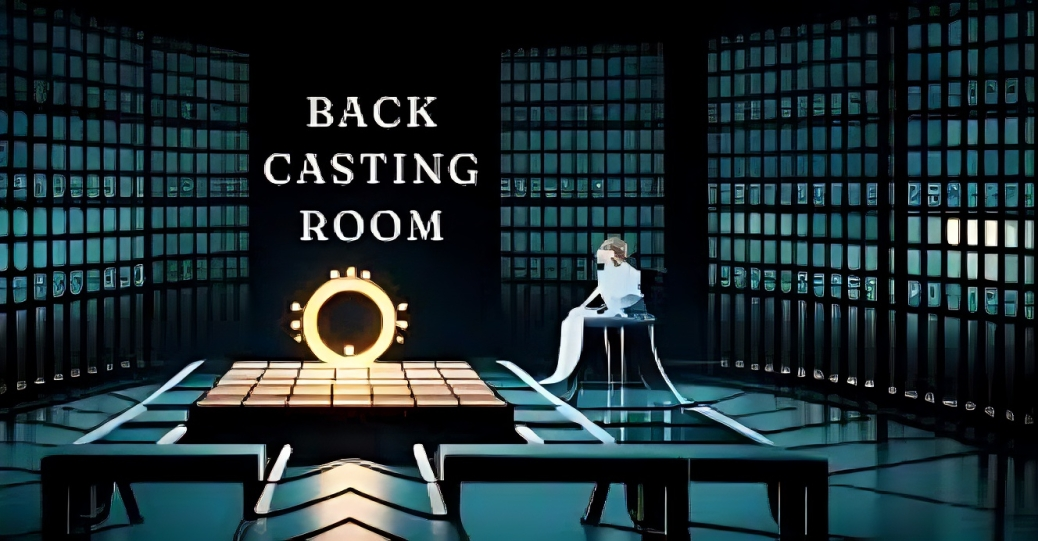In the ever-evolving landscape of business and technology, innovation is not just an option—it’s a necessity. To stay ahead of the curve, companies need to not only predict the future but actively shape it. This is where the concept of the back casting room comes into play. Unlike traditional forecasting methods that predict future trends based on past data, back casting starts with a future goal and works backward to determine the steps needed to achieve that vision. This approach can significantly enhance strategic planning and innovation. In this article, we will delve into the concept of a back casting room, its benefits, and how to set one up for your organization.
What is a Back Casting Room?
A back casting room is a dedicated space where teams come together to envision the future and develop strategic plans to reach that envisioned state. This method involves imagining a desired future scenario and then working backward to identify the actions, strategies, and milestones required to achieve that scenario. Unlike traditional forecasting, which often limits innovation by relying heavily on past and present data, back casting allows for more creative and forward-thinking solutions.
Benefits of a Back Casting Room
1. Enhanced Strategic Planning
Back casting enables organizations to set long-term goals and develop clear, actionable steps to achieve them. By starting with the end in mind, companies can better align their short-term actions with their long-term vision, ensuring that every decision contributes to the ultimate goal.
2. Encourages Innovation
By breaking free from the constraints of past data, back casting fosters a culture of innovation. Teams are encouraged to think outside the box and develop creative solutions that might not have been considered in a traditional forecasting scenario.
3. Improves Problem-Solving
Working backward from a future scenario helps teams identify potential obstacles and challenges that might arise. This proactive approach allows for better problem-solving and risk management, as teams can develop contingency plans and strategies to mitigate potential issues.
4. Aligns Organizational Goals
A back casting room helps ensure that all team members are on the same page regarding the organization’s long-term vision. This alignment fosters collaboration and coherence, as everyone understands the common goal and their role in achieving it.
Setting Up a Back Casting Room
1. Choose the Right Space
Select a room that is comfortable and conducive to creativity and collaboration. The space should be equipped with tools such as whiteboards, sticky notes, markers, and digital projection equipment to facilitate brainstorming and idea-sharing.
2. Assemble a Diverse Team
Gather a team that includes members from different departments and levels within the organization. A diverse team brings various perspectives and expertise, which can lead to more comprehensive and innovative solutions.
3. Define the Future Scenario
Begin the back casting process by clearly defining the desired future scenario. This could be a specific goal, such as becoming a market leader in your industry, or a broader vision, such as achieving sustainability in all business operations.
4. Work Backward to Identify Steps
Once the future scenario is defined, work backward to identify the key milestones, strategies, and actions needed to achieve that goal. Break down the process into manageable steps and assign responsibilities to team members.
5. Develop an Action Plan
Create a detailed action plan that outlines the steps identified in the back casting process. Include timelines, resources needed, and measurable outcomes to track progress. This plan should be a living document, regularly updated as new information and insights are gained.
6. Foster Continuous Collaboration
Maintain an open and collaborative environment where team members can continuously share ideas and feedback. Regularly scheduled meetings and brainstorming sessions can help keep the momentum going and ensure that the team stays focused on the long-term vision.
Case Study: Successful Implementation of a Back Casting Room
Company XYZ’s Journey to Sustainability
Company XYZ, a leading manufacturer in the technology sector, wanted to transition to 100% sustainable operations by 2030. To achieve this ambitious goal, they established a back casting room. The team, comprising members from R&D, supply chain, marketing, and executive leadership, defined their desired future state: zero-waste production, renewable energy use, and sustainable product materials.
Working backward, they identified key milestones, such as developing eco-friendly products, sourcing sustainable materials, and investing in renewable energy. They also pinpointed potential challenges, like supplier resistance and higher initial costs, and developed strategies to address these issues. Over time, Company XYZ implemented their action plan, regularly updating it based on progress and new insights. By 2024, they had already achieved significant milestones, including a 50% reduction in waste and a transition to 75% renewable energy.
Conclusion
The back casting room is a powerful tool for any organization looking to innovate and achieve long-term success. By starting with a clear vision of the future and working backward to identify the necessary steps, companies can enhance their strategic planning, foster innovation, and align their organizational goals. Whether you’re aiming for sustainability, market leadership, or another ambitious target, a back casting room can help turn your vision into reality.
Implement this forward-thinking approach today, and pave the way for a successful and innovative future.











